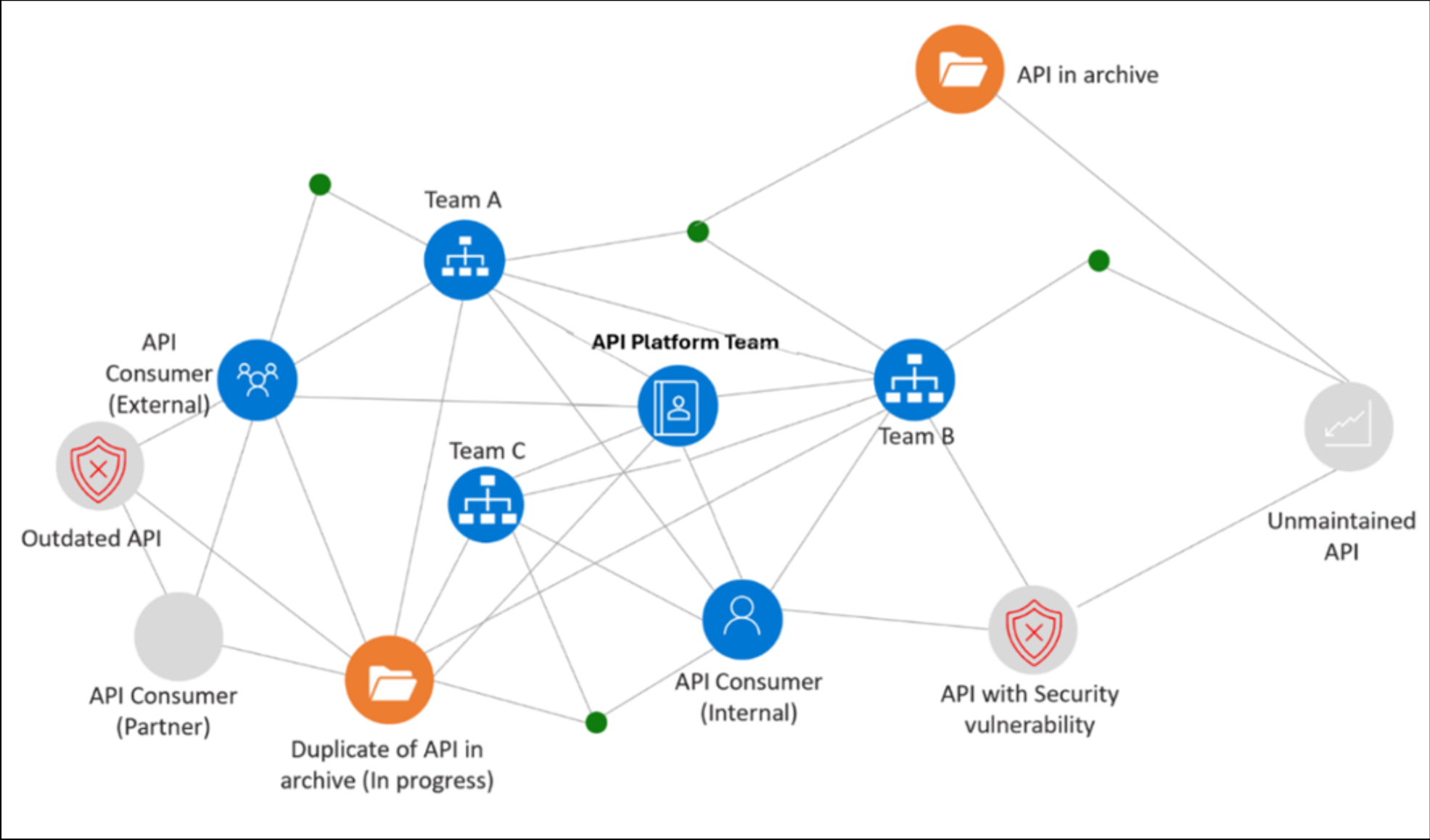Introduction
In the current era of digital transformation, organizations are increasingly adopting cloud-based technologies and incorporating microservice patterns, which has been a catalyst in significantly escalating the use of Application Programming Interfaces (APIs). The use of these APIs across different platforms, environments, and architectures shows a gradual evolution in technology, which is essential for maintaining a successful business.
However, organizations struggling to adapt to this API proliferation, face three major challenges:
-
API sprawl or Navigating the API Maze: The first challenge is identifying APIs due to a proliferation of platforms, API Gateways and other tools implemented by disparate teams and environments. This creates a complex maze and significant obstacles for modern organizations.
-
Managing API Complexity: Typically APIs, which enables varied functionalities across multiple environments and platforms, carry their own unique set of quality standards. This evolving and diverse API landscape spawns a complex management area for IT departments, particularly while managing multiple versions and definitions of APIs, resembling a daunting trap requiring extensive effort to manage an overwhelming number of API variations.
-
Addressing API Security Threats: The recent spike in security attacks directed at APIs, pose a significant concern for today's enterprises. The arrival of concealed or 'shadow' APIs introduces potential security risks, obliging companies to conduct exhaustive forensic evaluations to determine potential damage and strategize appropriate mitigation tactics. Thus, mitigating these security risks demands proper API Governance and ongoing threat monitoring capabilities to safeguard an organization's digital ecosystem.
